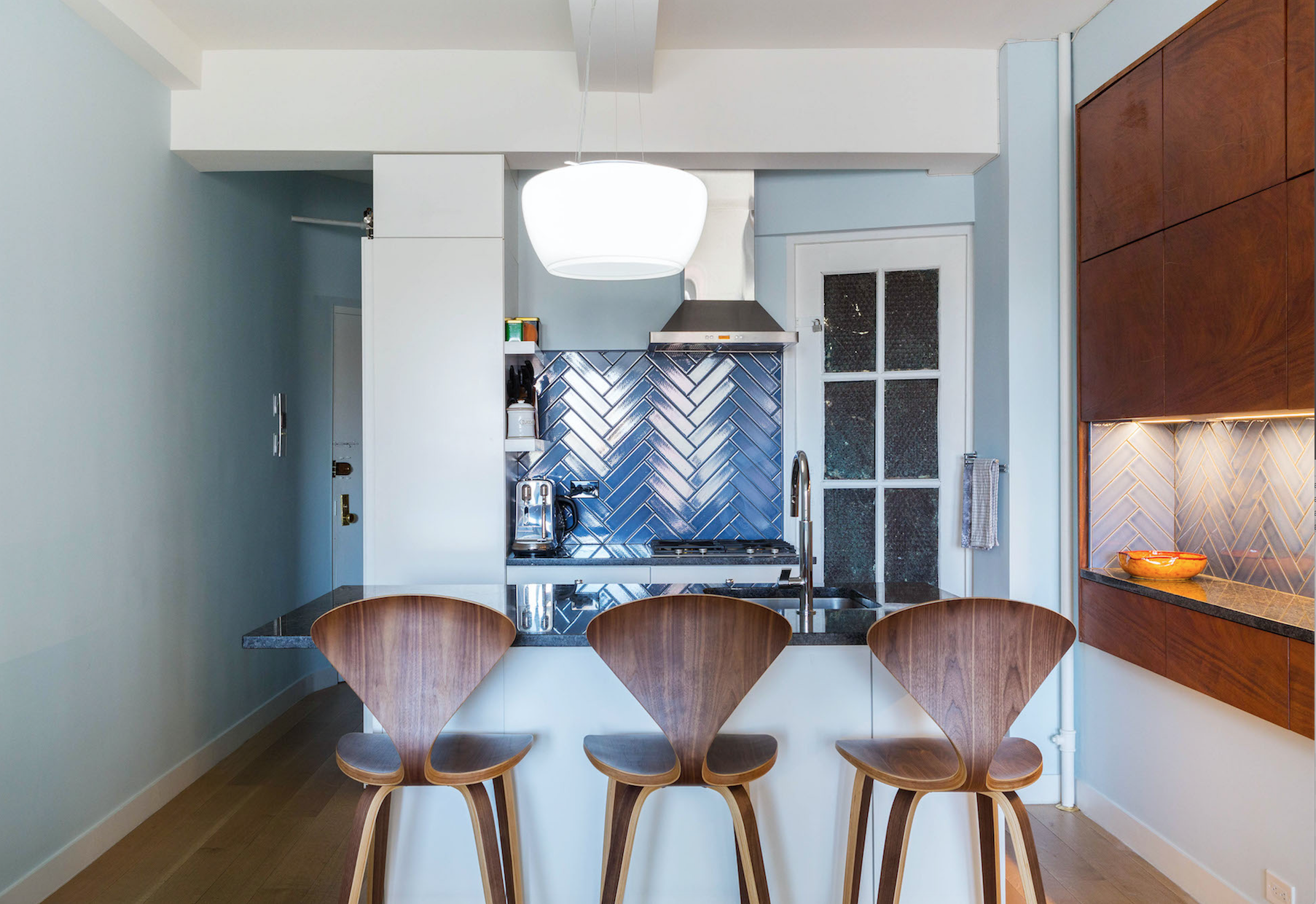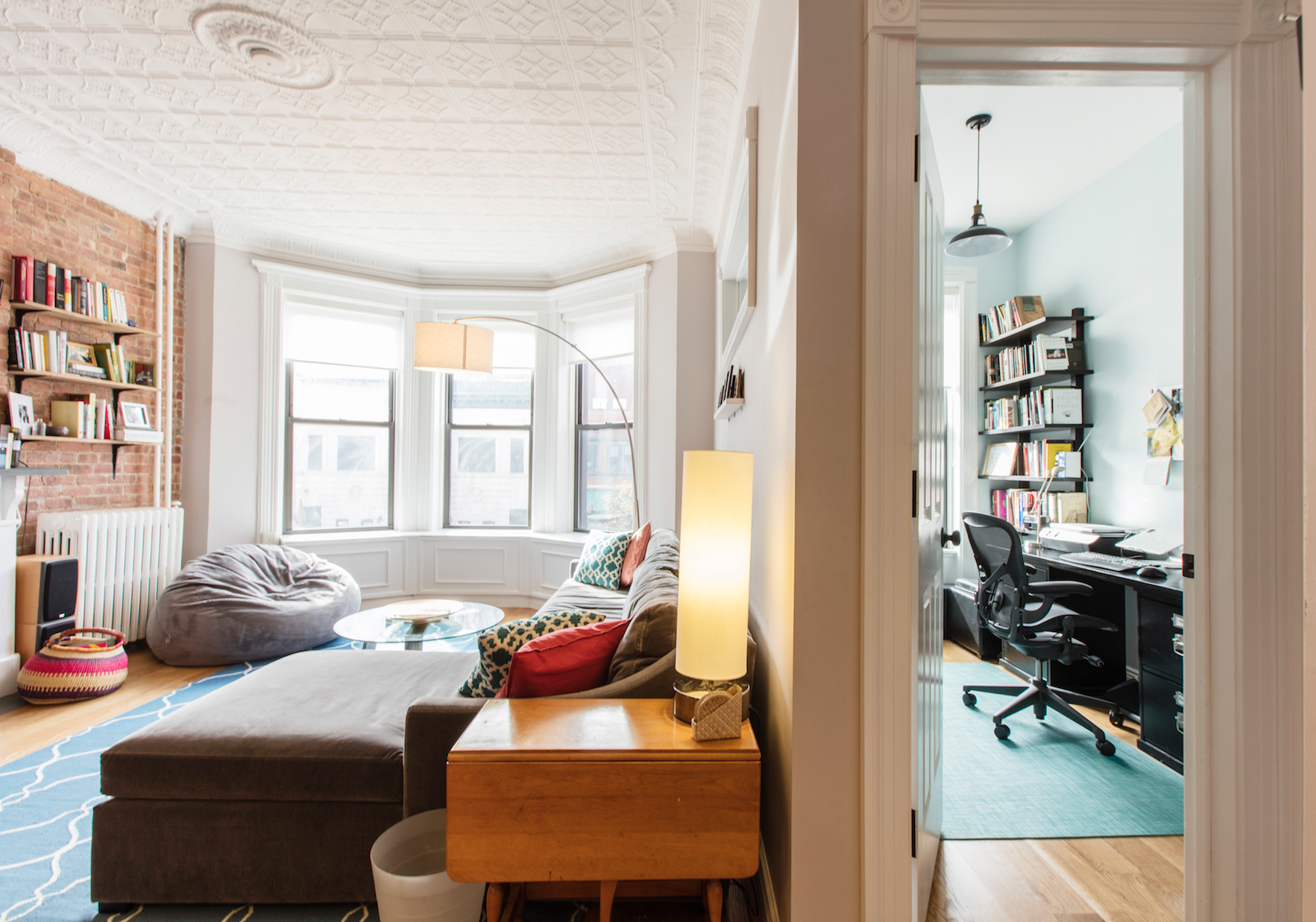The NYC buyer’s guide to renovating before you move in

With the place in need of a complete overhaul, this family opted to renovate the entire Brooklyn apartment before moving in.
Unless you are very lucky, the New York City apartment or brownstone you’re buying needs work. Anywhere from a little bit—like refinishing the floors and painting the walls—to a top-to-bottom gut renovation. So while you finalize what is likely the biggest purchase of your entire life, you must also determine how much work you and your budget can (or should) do before you move in—and ensure it takes place as fast as possible to mitigate the expense of carrying two homes at the same time.
“Chances are, you’ve been dreaming of this home—and had a vision of what it would be like—for many years, so it’s highly unlikely it will be exactly as you imagined,” says Jean Brownhill, founder and CEO of Sweeten. “We’re here to help renovating homeowners finalize that vision within a reasonable timeline and budget.”
Below, the renovation experts at Sweeten—a free service that matches homeowners with the best vetted general contractors and architects for their renovation, then monitors the project until completion—explain what you need to know to move ahead as quickly, efficiently and economically as possible.
What it costs, how long it takes, and what to tackle
If your new space needs work across multiple rooms—versus, say, redoing a single small room like a secondary bathroom that you can live without temporarily—you’re probably better off tackling it before you move in, advises Brownhill.
“Flooring is the first project that comes to mind—not so much because of the cost,” which is $5-$10 per square foot to sand, seal, stain, and $15-$25 per square foot to replace floors and moldings, says Brownhill. “The reason to do it while your apartment is empty is because it’s a huge hassle if you’ve already moved in. You’ll have to put the furniture in storage and move out.”
Similarly, skim coating your walls and ceilings—which takes about a week and costs around $4-$6 per square foot—is a messy and intrusive project better undertaken in a vacant apartment.
If you anticipate doing more extensive work over the next couple of years—such as renovating a kitchen or bathroom, taking down or adding walls, installing central air or custom built-ins—you will certainly save time and money by bundling the projects and getting them done in one fell swoop.
“There are overhead costs involved for a general contractor to marshal the labor and equipment and come to your building, then additional costs for individual aspects of the work,” explains Brownhill. “You want to maximize the ‘walking-into-my-apartment’ fee and only pay that once.”
Another reason to front-load your reno work: insurance. If your building requires a large insurance policy—like the recent Sweeten client whose building asked for a $5 million umbrella policy—you may find it tough to find a contractor for small jobs who carries this level of coverage later on. This means you’d have to pay more for a contractor who has this insurance level, and/or wait for his availability, because guys who take on smaller jobs cannot meet the requirement.

How long will your renovation take?
Every project is different, but below are some general guidelines on what to expect after you’ve hired your contractor and obtained necessary approvals from your building and, if necessary, the Department of Buildings.
If you’re simply updating your floors, walls and ceilings, and perhaps swapping out some appliances and/or plumbing fixtures such as a toilet or sink, allow at least three to four weeks from the time work begins. You’ll find helpful information on costs, options and timelines on Sweeten’s blog.
Gut renovating your kitchen or bath? Generally speaking, plan on four to six weeks for a bathroom and six to eight weeks for a kitchen. Custom features can take longer, so the actual timeline really depends on your project.
Gut renovating your entire apartment? Allow one to three months for a studio, two to four months for a one- or two-bedroom and four months to a year for a brownstone.
What outside factors can slow things down?
It is important to check with the Department of Buildings to see if there are any open violations for your building, which could delay getting approval for your project. While Department of Buildings filing requirements are typically determined by your building’s board, the majority of major renovations in NYC require filing for approval.
Another factor in your timetable will be the restrictions that your building places on construction work. While many luxury buildings will let you renovate year-round, some put a limit on the types of tools that can be used and the duration of your project. For example, some have “noise rules” and won’t allow jackhammers for removing floors because it will disturb others, which increases demolition costs. Other constraints include holiday schedules, daytime work hours, and elevator upgrades.

What’s the best way to find a good contractor?
Finding a general contractor for major renovations is something that Sweeten can help with. After you post your renovation project to the website, their in-house matchmakers typically match you with three to five vetted general contractors within 48 to 72 hours. (If there are questions regarding budget or scope, they will reach out to clarify.) Sweeten can help with evaluating the different estimates, then after a contractor is hired, checks in at key stages until the work is done.
That quick turnaround is important to jump starting the work and launching the next phase: meeting general contractors for the first time, walking through your home and securing estimates. With unoccupied spaces, meetings and walk throughs can be done within a matter of days.
“The purpose of the initial visit is to see if you and the general contractor are a good fit in terms of communication styles and your expectation of customer service,” says Brownhill, adding that it’s useful to think about the type of personalities you’ve worked well with at high-stakes moments in the past. It’s also important for the contractor to understand the space and the building’s conditions as well as issues like access and parking. One or two visits should be enough, but large projects like townhouse renovations may require more.

How much does a gut renovation cost?
Plan on spending about $200 per square foot on a gut renovation using mid-grade finishes and materials. That works out to $80,000 for a 400-square-foot studio; $120,000 for a 600-square-foot one-bedroom; $200,000 for a 1,000-square-foot two-bedroom; and $300,000 for a 1,500-square-foot three-bedroom. Keep in mind these numbers should be used as a rough guide, as variables including product selections and proportion of wet spaces vs. dry spaces can affect the final tally.
As the square footage increases, there are likely to be additional soft costs that should be taken into consideration, such as filing with the Department of Buildings; architectural, design or engineering services; and co-op fees such as professional review of plans, inspections and administrative fees.
The big picture
Now you have an overview of how to map out a renovation, the advantages of grouping together jobs pre-move and general expectations for the costs and time involved. One last thing to figure out: how to alert your future neighbors that you are planning renovation work. This is a great time to introduce yourself and Sweeten has a post on this with a sample note that you can use to start the conversation with your new neighbors.
After all, you may be living under the same roof together for a long time, so extending a little courtesy before you move in can pay off and let you enjoy your newly renovated apartment in peace.
Named “Best Contractor Locator" by New York Magazine and one of “America’s Hottest New Companies” by Inc., Sweeten is an award-winning, free service that matches homeowners with the best general contractors for their renovation, with support from start to finish.
























